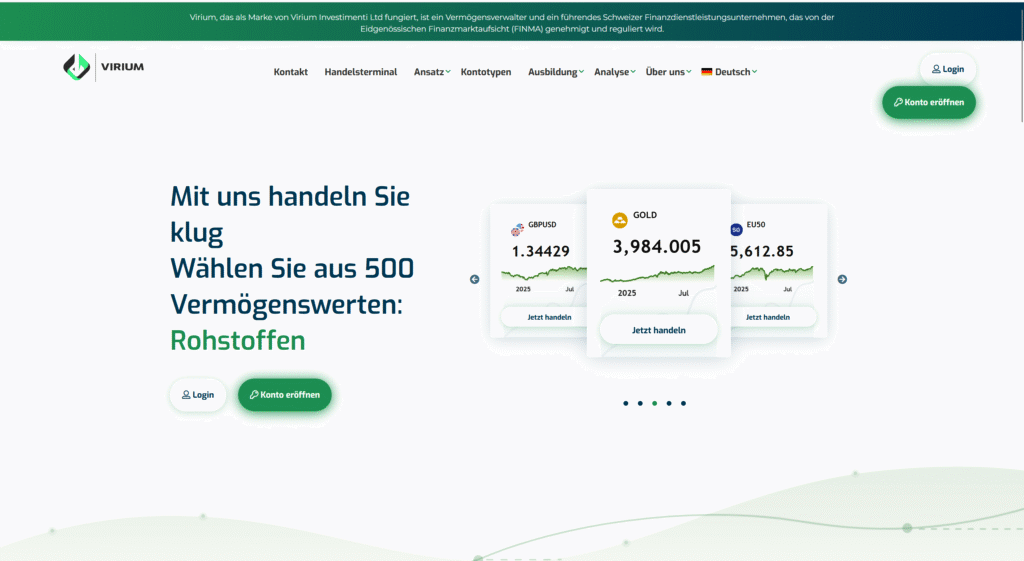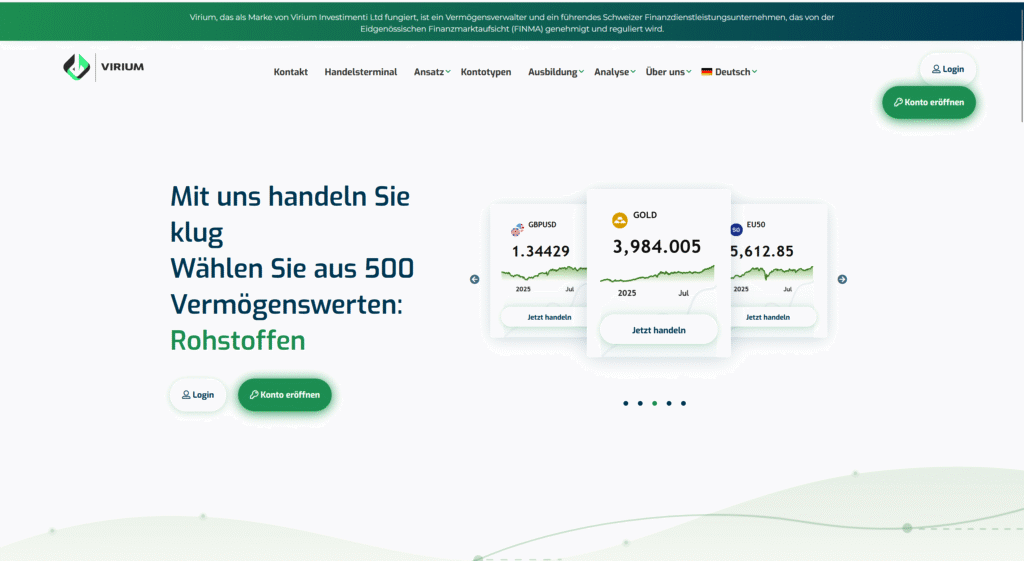In the digital investment and trading sector, claims of exponential gains, faster execution, or “premium access” are ubiquitous. Virium.net appears to position itself as one such platform: offering a promise of enhanced performance, upgraded tools, and more profitable trading. But when you peel back the marketing veneer, urgent questions emerge. In this analysis, I expose five explosive warnings tied to Virium.net’s “upgrade narrative” the same Element 1 style strategy used by deceptive platforms to lure unsuspecting investors.

1. The “Performance Uplift” Narrative: Too Good to Be True
At the heart of many broker/digital finance schemes is a promise: “We’ll give you a better, faster trading experience.” That’s precisely the hook implied by Virium.net’s branding — the name itself hints at acceleration, vitality, and edge.
Yet, when a platform leans heavily on performance rhetoric (zero spreads, instant execution, no slippage, guaranteed model returns), one must ask:
- Where is the proof? Real brokers support performance claims with audited backtests, third-party verification, order execution logs, or regulatory oversight. I found no credible audit reports or third-party benchmarking publicly associated with Virium.net (or with a company of that domain).
- What hidden tradeoffs exist? Performance claims often mask fees, spreads, commissions, or internal markups. The “spread from 0.0 pips” pitch, for instance, usually hides that it’s only for certain instruments or under specific conditions — or that commissions, rollover fees, or swap spreads compensate the broker.
- Selective performance visibility: Many scam-style brokers deliver “simulated profit” dashboards early on, which encourage additional deposits — but real executions (especially during volatile times) deviate sharply. Without real-time transparency, it’s nearly impossible for users to distinguish simulation from real trade flow.
Thus, the first major red flag is the absence of verifiable performance data leveraged to justify the “upgrade” promise.
2. Regulatory & Corporate Opacity
A trustworthy investment or trading platform should display clear, verifiable regulatory credentials (license numbers, supervising authority, jurisdiction). But for Virium.net:
- I was unable to locate reliable registration or licensing data tied to Virium.net in major regulatory databases (e.g. SEC, FCA, CySEC, ASIC, etc.). The lack of visible regulatory oversight is deeply concerning.
- The domain virium.net itself gives no transparent clue to corporate structure, ownership, or legal entity. Whois or domain registration data appears anonymized (hidden), which is common among platforms seeking to shield their operators.
- Without a verifiable headquarters, audited financials, or office presence, the platform lacks accountability — either to regulators or to clients.
In many fraudulent operations, operators leverage shell companies or offshore structures (with little to no real oversight) to dodge scrutiny. The opacity around Virium.net’s corporate and regulatory setup suggests it could be operating under similar conditions.
3. Lack of User Feedback, Verifiable Testimonials, or Independent Reviews
One reliable test of any online financial service is user experience — especially around deposits and withdrawal attempts. In the case of Virium.net:
- There is very little public user feedback or review history visible across broker review sites, forums, or social media. A near silence in reviews often suggests the platform is ultra-new, deliberately avoids scrutiny, or suppresses negative commentary.
- No credible independent reviews (with screenshots of trades, withdrawal proofs, or audit logs) appear in my research.
- That absence means potential clients can’t validate whether the performance promises hold up in practice, or whether withdrawal requests succeed.
Platforms that deliver value early will often generate buzz, positive reviews, or media coverage — the lack thereof is stark. It supports suspicion that Virium.net might be more focused on acquiring deposits than maintaining long-term user satisfaction.
4. Bonus Offers, Promotional Hooks & Withdrawal Barriers
A common element in high-risk trading platforms is the use of bonuses, promotions, and loyalty schemes to lock in users. These often come with fine print that makes withdrawal extremely difficult.
While I found no explicit “bonus” terms on the public layer of Virium.net, the pattern from other platforms suggests we should ask:
- Does Virium.net offer 100% bonus, matching funds, or “VIP upgrade” offers? If so, are there volumetric or time-based trade requirements before withdrawals are allowed?
- Are there hidden clauses, such as reverse clauses that allow the broker to recoup bonus value when you try to withdraw?
- Does the platform require additional “verification fees,” “unlocking deposits,” or “security deposits” as prerequisites to withdrawal?
If any of these exist (and many suspect platforms embed them), then the upgrade narrative (i.e. “invest more, achieve more”) becomes the trap — pushing users into locked capital.
5. Execution Control, Simulated Trading & Internal Risk Manipulation
Given the absence of transparency in infrastructure, one must assume that Virium.net might exert internal control over trade execution, liquidity and pricing. Here’s how manipulation often operates:
- Simulated dashboards: Users see smooth, rising balances in the dashboard that don’t reflect real market conditions or order filling. These are essentially illusions until one attempts to withdraw.
- Widened spreads/slippage during volatility: When markets are active, the spreads may widen suddenly, or trades may be delayed or re-quoted — forcing users to lose or cancel.
- Account freezes or internal review holds: Once withdrawal is requested, the user is told to comply with new “KYC/AML” checks, security deposits, or waiting periods, delaying or blocking access.
- Internal matching or broker vs client conflict: In some operations, the broker acts as counterparty so your profit may be someone else’s loss within the platform, giving them an incentive to limit or block genuine profit extraction.
Without visible independent execution logs or third-party audit trails, all the performance improvements Virium promises remain suspect: you may be “upgrading” into a black box controlled by the platform.
Conclusion & Strategic Advice
Virium.net’s branding implicitly promises a performance upgrade — faster trades, better returns, superior tools. This is the classic Element 1 approach: advertise enhancements to attract deposits. But beneath that promise lie serious unanswered questions:
- No verifiable performance records or audit trail
- Opaque regulatory and corporate structure
- Near-zero public user reviews or withdrawal evidence
- Potential for promotional traps and withdrawal barriers
- Likely internal control over execution and pricing
Taken together, these red flags suggest extremely high risk potentially fraudulent or semi-fraudulent. If you or your clients are considering Virium.net, here’s a recommended sanity checklist:
- Demand a certified, third-party audit of trade execution and withdrawal history before depositing significant funds.
- Require proof of registration with a recognized financial regulatory agency.
- Test with minimal amounts first, attempt withdrawals, see how promptly they are honored (if at all).
- Avoid accepting bonus offers or promotions without seeing full terms and conditions.
- Collect and preserve all communication, trade confirmations, and withdrawal requests — in case future recovery efforts are needed.



